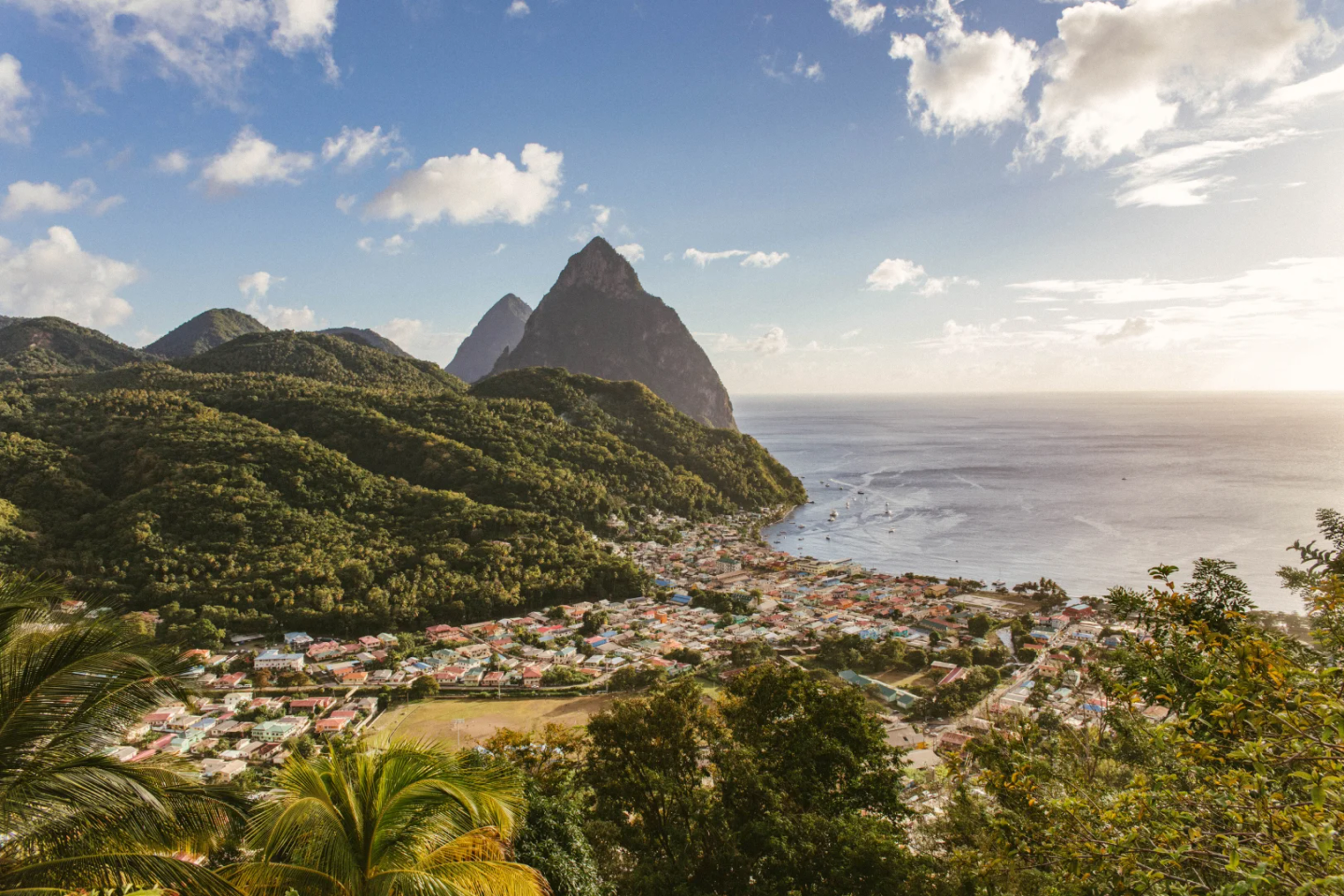Embracing St. Lucia's seasonal changes

St. Lucia, a gem in the Caribbean, offers a unique blend of natural beauty, vibrant culture, and warm hospitality. Soufriere, with its iconic Pitons and rich history, stands as a testament to the island's allure. To make the most of your visit, it's essential to know the best times to explore based on weather, events, and crowd levels.
By understanding the rhythms of St. Lucia and Soufriere, you can tailor your trip to your preferences, whether you're seeking sunny beach days, cultural immersion, or serene nature escapes. Whatever you choose, the island's charm awaits!
Navigating the Crowds:
peak and off-peak travel
Peak season (December to April)
Coinciding with the dry season, this period sees the most tourists. It's a vibrant time to visit, but reservations are recommended.
Off-peak season (May to November)
If you prefer a quieter experience, these months are ideal. You'll enjoy fewer crowds, and accommodations might offer lower rates.
Travel tip
Early December and late April strike a balance between good weather and fewer tourists, making them great times to visit St. Lucia.
Weather Patterns: Sun, Sea, and a Touch of Rain
Dry Season:
typically December to April
This period experiences less rainfall, making it the preferred time for beach activities and hiking. Average temperatures range from 77°F to 88°F (25°C to 31°C). The humidity is relatively lower, ensuring a comfortable warmth during outdoor activities.
Water Intake
The dry season can be hotter and more humid, especially during midday hikes. It’s essential to increase your water intake. Consider carrying an extra liter of water during these months.
Clothing
Lightweight and breathable clothing is crucial. A hat and sunglasses become even more vital to protect against the direct sun.
Footwear
Trails might be drier and more compact, but always be prepared for occasional slippery patches.
Rainy Season:
typically May to November
This season brings frequent but typically short-lived showers, enhancing the lush greenery of the rainforests. Temperatures remain between 78°F and 89°F (25.6°C to 31.7°C). However, the increased humidity can make it feel warmer than the actual temperature, so it's essential to stay hydrated and plan activities accordingly.
Hurricanes
The rainy season is also hurricane season. Though St. Lucia lies south of the primary hurricane belt, it can still be affected. During these months, increased humidity is common due to atmospheric moisture from nearby storms.
Check before travelling: St. Lucia Meteorological Service
Waterproof gear
Rain showers can be frequent. Waterproof jackets, ponchos, and zip-lock bags to protect electronics are advisable.
Footwear
Waterproof hiking boots with a good grip are essential as trails can become muddy and slippery.
Insect repellent
Mosquitoes and other insects are more active during the rainy season. Ensure you have a good quality insect repellent, preferably one containing DEET.
Transition Months:
typically December and May
Preparation
These months can be unpredictable with a mix of dry and wet days. It’s best to prepare for both scenarios – pack a lightweight rain jacket and extra water.
Wildlife
As the seasons transition, you might witness different flora and fauna. Birdwatchers, in particular, might spot migratory birds.
General tips
Timing
Regardless of the season, early morning or late afternoon hikes are recommended to avoid the midday sun and heat.
Forecast
Always check the weather forecast before your trip. Sudden weather changes can occur, especially in mountainous and forested areas.
Trail closures
If traveling during peak rainy months, be aware of potential trail closures or advisories due to heavy rainfall or landslides.